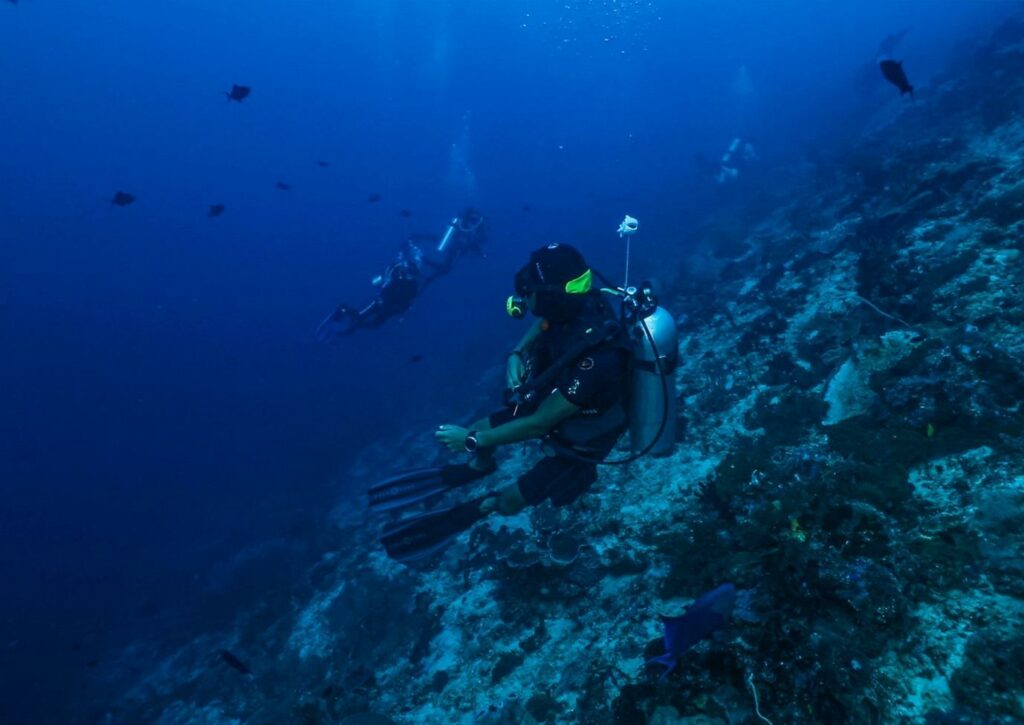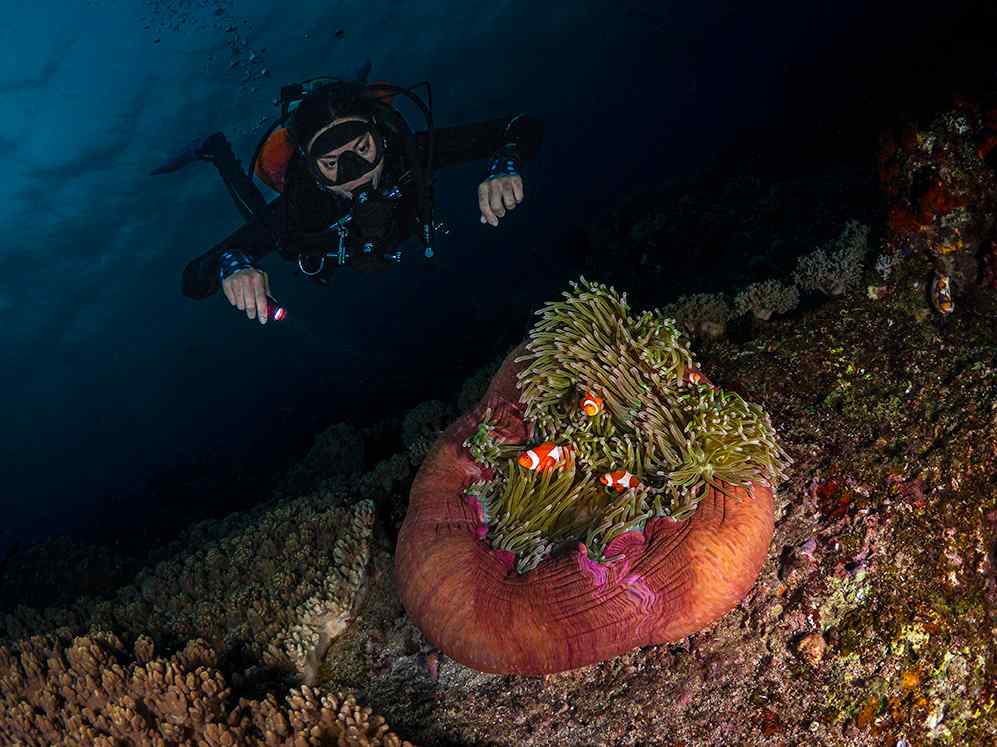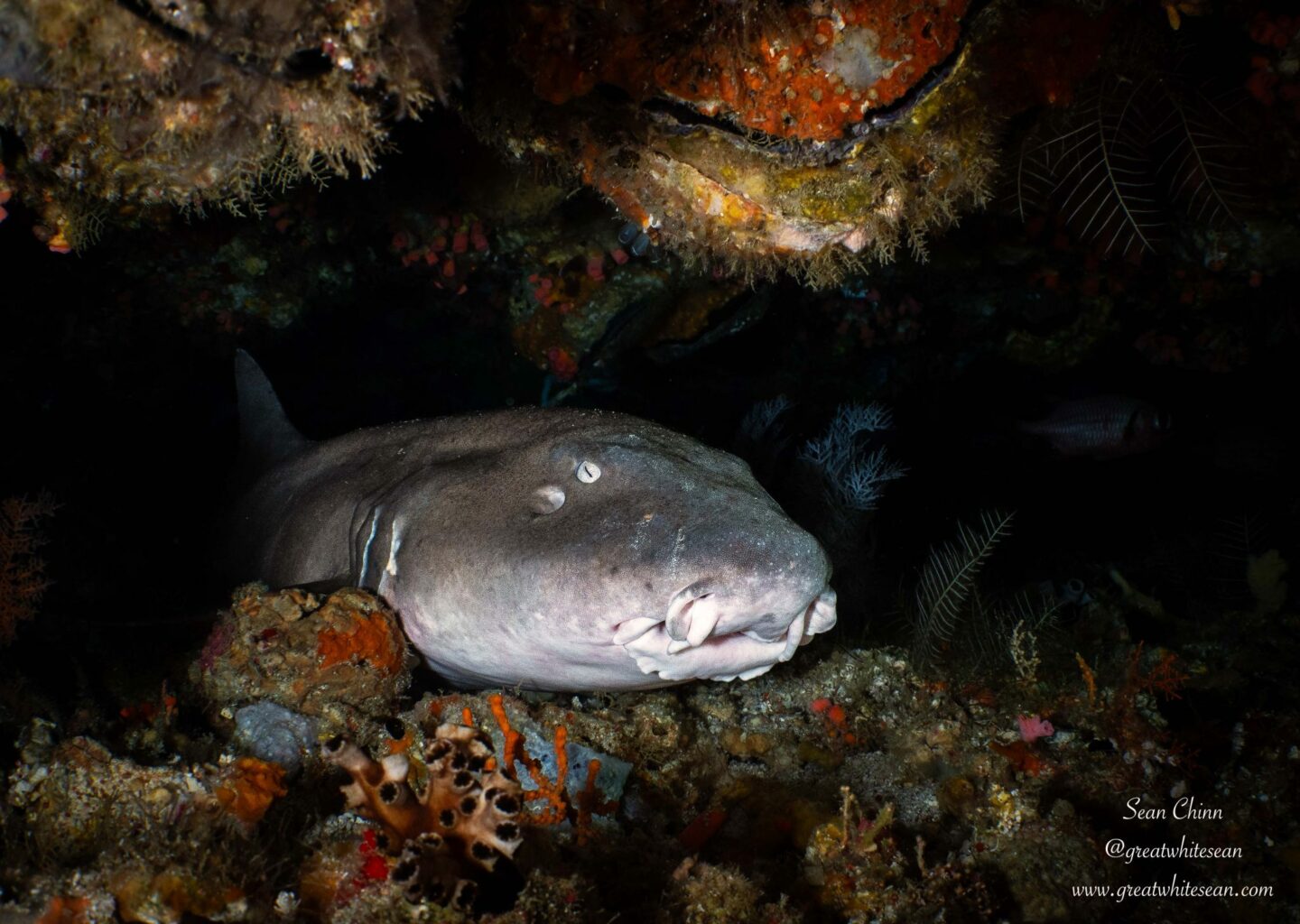Biodiversity combines with Ecotourism: Raja Ampat
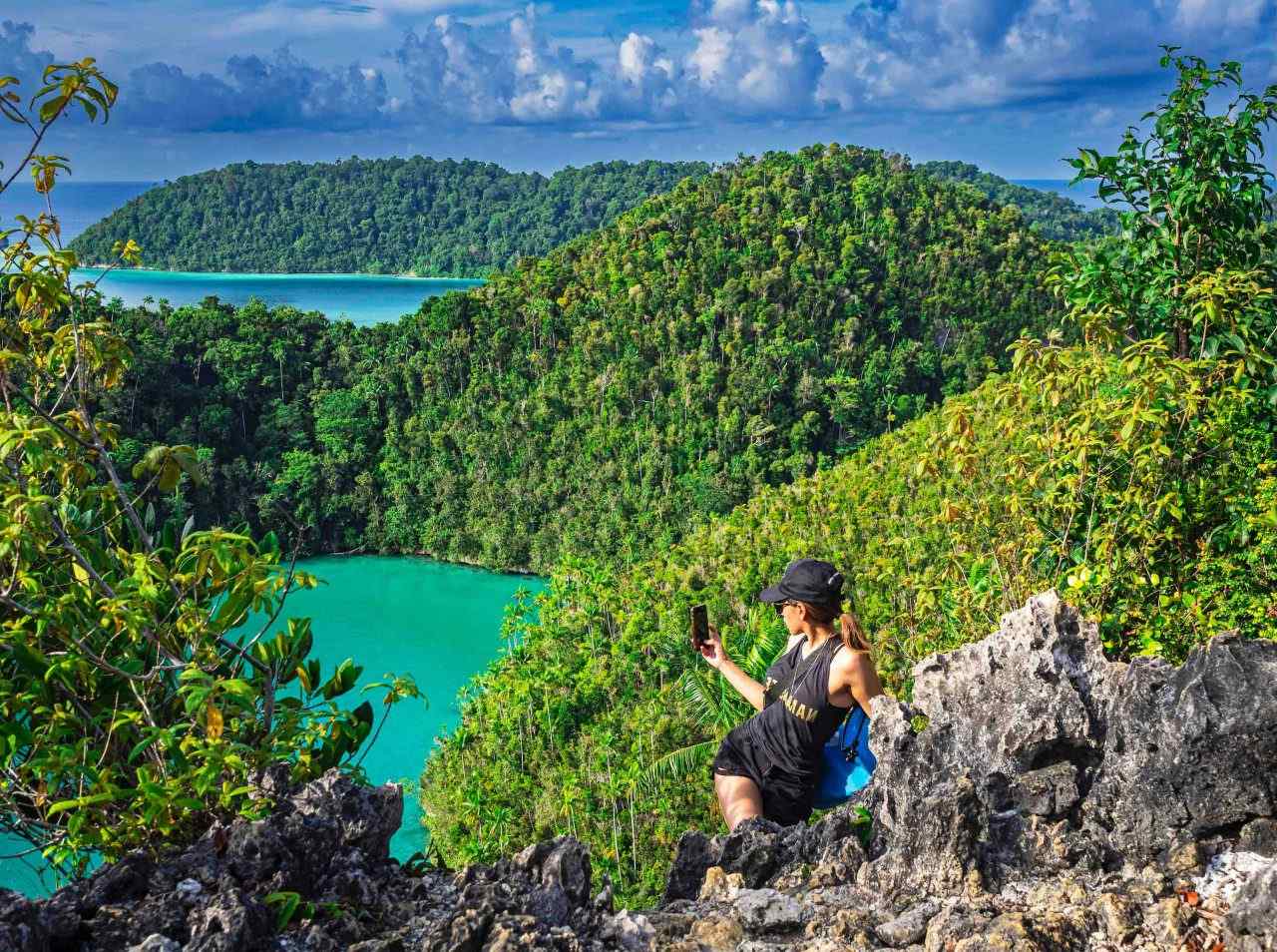
Raja Ampat is home to over 600 species of hard reef building coral, 700 species of molluscs, 1300 species of reef fish, 17 species of marine mammals (including dugongs, sperm whales, dolphins, and orcas), and an astounding 57 species of mantis shrimp.
Thus making it one of the most biologically diverse coral reef ecosystems in the world. Its central position in the Coral Triangle is the reason behind this. Furthermore, a plethora of shark species, oceanic and reef manta rays, and five distinct kinds of sea turtles are also present.
Raja Ampat is an ideal destination for scuba divers. Raja Ampat is a haven for scuba divers, but it’s also a popular spot for anyone interested in marine biology and exploring the seafloor. Raja Ampat is home to a wide variety of marine species and ecosystems, making it a unique location on Earth. Conservation International estimates that 75% of the world’s species call Raja Ampat home. Why Is Raja Ampat Such a Biodiverse Habitat?
Raja Ampat's biodiversity is affected by a lot of things, such these:
The Indonesian Throughflow
Raja Ampat’s biodiversity is a product of its unique position at the Coral Triangle’s epicentre, where the Indian and Pacific Oceans converge. Because of its confluence, the water is called the Indonesian Throughflow (ITF). It comes from the Pacific and makes its way to the Indian Ocean via a web of canals that encircle the islands.
A large amount of water flows through Indonesia, slowing the Earth’s rotation. The ITF plays a major role in the monsoon and El Niño-Southern Oscillation (ENSO) meteorological phenomena, affects the heat and freshwater balances of the two seas, carries essential nutrients, and fosters Raja Ampat’s biodiversity.
Raja Ampat's complex topography
The rich variety of life in Raja Ampat is largely due to the region’s intricate landscape, which includes over 1,500 islands and islets surrounded by reefs and deep canals. Deep reefs are home to sharks and other huge predators, whereas shallow reefs are ideal for invertebrates, fish, and coral.
Cliffs and valleys on land provide a habitat for seabirds and other species of animals. Raja Ampat is home to a wide variety of geological features, which contribute to the region’s rich biodiversity. This biodiversity includes endemic marine and terrestrial species. Raja Ampat has been designated as a Geopark by the UNESCO Foundation.
Geological features in the geopark, including faults and joints, contribute to erosion and the construction of distinctive limestone islands. The eastern islets of Misool, Wayag, and Kabui are all good places to see these formations. The earliest known rock formation in Raja Ampat dates back to the Silurian-Devonian era and is thought to be 443.8-358.9 million years old. The Earth’s age is around one-tenth of that.
The Isolated Location
Raja Ampat is tucked away in the very easternmost part of Indonesia and can only be reached with great effort and thorough planning. It is an excursion you will not regret undertaking to discover the intriguing shoals, cays, and islands.
Protected from the detrimental impacts of mass tourism and overdevelopment, Raja Ampat’s biodiversity is able to thrive because to its seclusion from other areas of human development such as overpopulation and overfishing. However, as the region has become more accessible to tourists in the last decade, this hazard has grown.
The Reasons Raja Ampat Is Well-Known
Raja Ampat is well-known for its stunning natural scenery. Incredible underwater life teeming with creatures you’ve never seen before is just one of the many stunning things to behold in Raja Ampat, which is also home to pure environment and charming, neighbouring islands.
Turquoise and green waters, seemingly alien landscapes, lofty hills, and mysterious rainforests are all available to visitors. The latter are home to some of the world’s most endangered species, such as the red bird of paradise, which can be challenging to see.
In the Fam Islands, Pianemo Hill is well-known as the site of the world-renowned diving destination Melissa’s Garden. Wayag Island and Misool Island are two more must-visit destinations in Raja Ampat, both islands are fascinating and utterly hypnotic.
To fully immerse yourself in the original culture and warm hospitality of the Papuan tribes, another option is to visit a traditional Papuan village. Arborek Village is one of the most popular choices nowadays. Traditional tribal singing and dance are also on display there.
The Top Scuba Sites in Raja Ampat
Cape Kri
You must not miss the wonderful diving site that is Cape Kri! If you’re looking for a diving spot in Raja Ampat, go no farther than Cape Kri. In just 90 minutes, you can see an incredible 283 different reef fish species! This steep slope offers a little bit of everything, from breathtaking coral gardens to the chance to view passing rays like you’ve never seen before.
Numerous Fusiliers, Damsels, Surgeons and Anthias provide a splash of colour to the coral gardens. Sharks of the blacktip, whitetip, and grey varieties, as well as barracuda, mackerel, trevallies, and dogtooth tuna, are common inhabitants of the region.
Along with Napoleon Wrasse and enormous groupers, you might be surprised to spot bump-head parrots as well. This place is so surreal that it will hold your attention even after several dives! You must make a stop here on your vacation!
BatuLima
Situated 24 metres below the northeastern edge, “Batu Lima” (the name in Indonesian) is the ideal diving site for divers and a frequent favourite among them. Amazing and magnificent creatures including fusiliers, triggerfish, unicorn fish, and black-tip reef sharks may be seen by ascending the slope.
Ascending from the dive’s bottom, you’ll be able to swim through this canyon that splits the rocks; in the shallows, you’ll probably see a plethora of trevallies feeding. Along with the vibrant corals that cling to the rocks, we can also spot a plethora of nudibranchs and flatworms. Unpredictable and dynamic diving. Make this your first priority.
House of Biodiversity
To enhance your underwater exploration of Raja Ampat, be sure to stop by Biodiversity House Reef, where you may see a diverse array of coral reefs. Due to the relatively mild slope, this dive site might not be ideal for you. Raja Ampat is a great place to do scuba diving or snorkelling if you want to experience the stunning underwater scenery.
While scuba diving in these relatively shallow waters, divers may observe a variety of hard, soft, and mejas corals. Attractive features include coral reefs, decorative fish, pipefish, tail squid, and, most notably, the opportunity to observe sharks in their natural habitat. In case you’ve ever wanted to dive for the first time, here may be the perfect spot for you: an aggregation of huge batfish, ranging in age from juvenile to adult.
Mikes Point
From above, the island looks like a Japanese cruiser, thus the US Air Force attacked it many times during WWII. In spite of the rock pieces being blasted to bits, the reef has somehow grown again, creating fascinating overhangs and fissures that macroinvertebrates love.
Sweetlips, beaming for the cameras, often perch atop a magnificent wall. Because of its location practically in the centre of the Dampier Strait, Spanish Mackerel can frequently be seen hunting, and White Tip Reef and Black Tip Reef Sharks can be seen cruising.
Part two of the dive takes place in the shallows, where you may see sea snakes, turtles, epaulette and wobbegong sharks. An absolute must-see for any scuba diver visiting Raja Ampat.
Sardine Reef
This is a fantastic diving spot that you shouldn’t pass up! In the middle of a vast expanse of open ocean lies a little area of reef that resembles an oval. Around the reef, you’ll see an incredible variety of species, including fusiliers, surgeonfish, snapper, damselfish, and butterflyfish. Many different kinds of predators, including barracuda, Spanish mackerel, gigantic trevallies, and jacks, are attracted to this abundance of live food.
On rare occasions, you could even be lucky enough to see grey reef sharks in the water. In addition, you may spot other rare fish here, such as the Napoleon Wrasse, the Bump Head Parrotfish, and the Oceanic Triggerfish. to claim the most important place on your itinerary.
Blue Magic
Seated in the centre of the “blue” ocean, this site is really “magical,” and visitors are never sure what may be beyond the horizon. Huge schools of fish, including Spanish Mackerel, Giant Trevally, Barracuda, Dogtooth Tuna, Rainbow Runners, and countless Jacks, relentlessly pursue the mostly hard reefs.
Oceanic manta rays, bump-head parrots, blacktip and grey reef sharks, and other large fish may often surprise divers. This dive site is full of surprises, and you never know what can happen! This dive is going to be very thrilling!
Enjoy a Diving Trip in Raja Ampat and Komodo with La Galigo Liveaboard
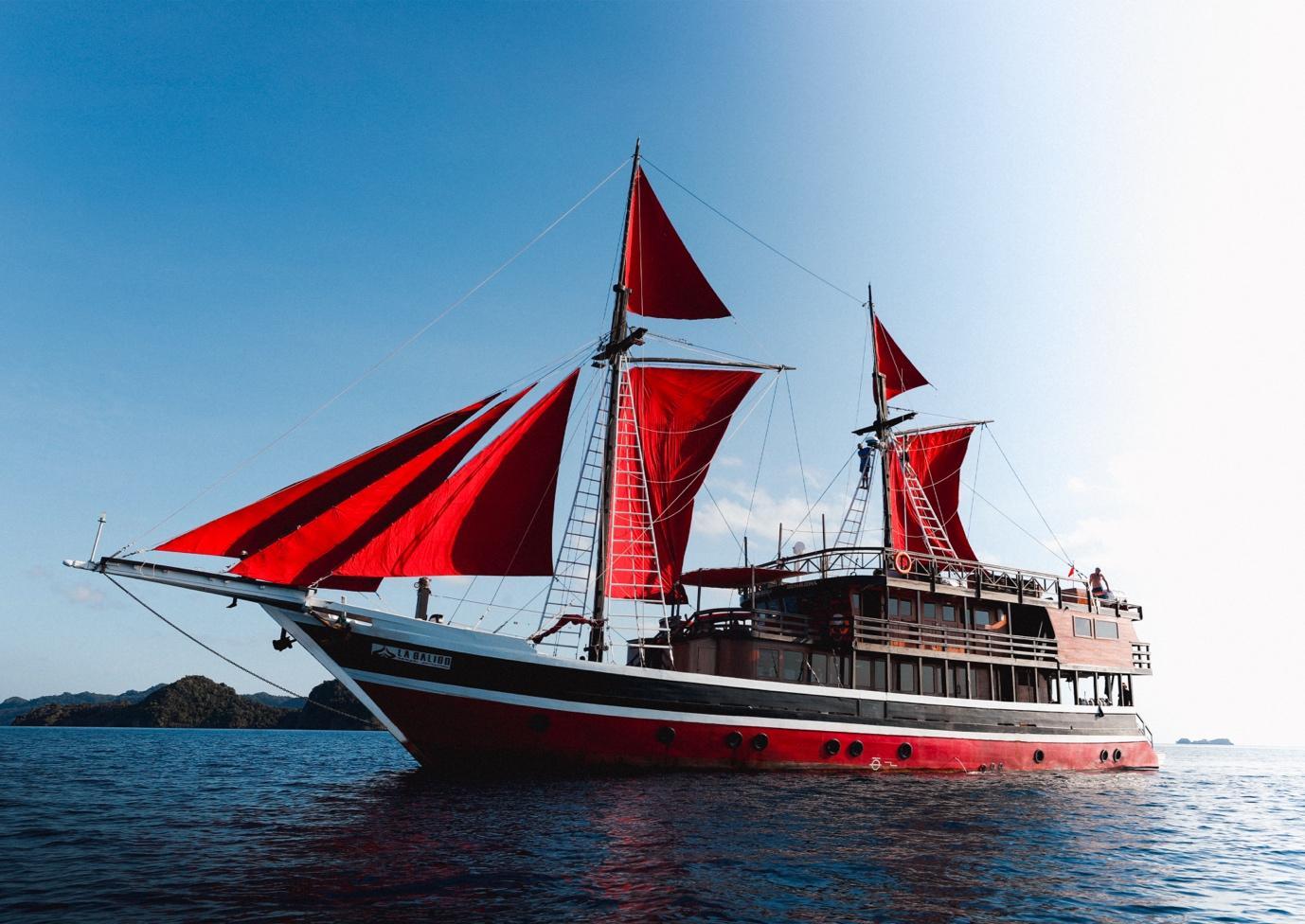
La Galigo is known as one of the best liveaboard diving boats in Raja Ampat Indonesia, and it offers trips to well-known diving destinations such as Komodo and Raja Ampat. The Coral Triangle is located in Indonesia, which has the highest marine biodiversity on the planet.
La Galigo Liveaboard Diving was founded in 2015 by two avid divers who wanted to explore some of Indonesia’s pristine reefs but found that all existing scuba diving options were frequently out of their budget, and wanted to provide an affordable option for everyone to be able to explore these beautiful places.
La Galigo Liveaboard Diving in Raja Ampat & Komodo is a friends and family affair, and our liveaboard diving trips are always focused on fun, safety, guest comfortability, and are exceptional value for money. Our trip prices range from $2,160 for a six-day Komodo liveaboard diving trip to $3,375 for an eight-day Raja Ampat liveaboard diving trip. The price includes four meals a day, diving three to four times a day or snorkelling, and land tours.


